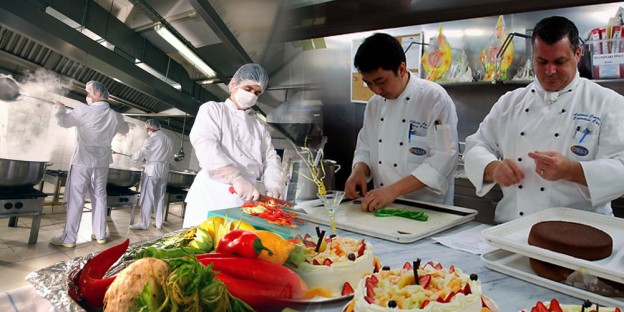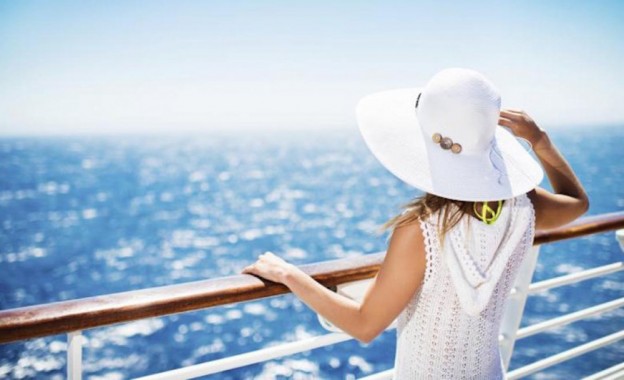A cruise ship kitchen is unlike anything one has seen before. In the maze of stainless steel fridges, compartments, and cooking stations, cruise ship chefs and others in the culinary department ensure that everyone on board – guests and staff – are well fed and happy. The galley – or kitchen – is divided into sections for ease of management: usually hot galley and cold galley, pastry and bakery.
The hot galley includes all types of cooking such as vegetables, fish, soup and grill. Generally, hot, savoury items are made in the hot galley, while desserts, cakes and ice creams come together in the pastry section.
Various hierarchical positions on cruise liners mean that hard work and experience can take you places. In the hot galley, stocks that will be used in main courses, soups and broths are made from scratch. In the pastry section too, everything is made from the ground up, including the base of the strawberry tart or the filo of a specialty baklava.
A lot of cleaning and gutting goes on in the meat section of the hot galley, and it’s imperative that staff in all cruise ship kitchens keep their workstations impeccably clean. Separating kitchens not only helps with management and division of work, but also ensures that absolutely no aromas get mixed. Nobody wants their exotic dessert catching the strong aroma of garlic.
In both, cruise ship chefs need to have a keen sense of taste to maintain a perfect balance of flavours and a sense of aestheticism to allow for beautiful plating that will tantalise any guests’ taste buds.
Usually, in a hot galley, the work environment is warm and crowded as chefs attend to service requirements during meal times. Since all meals need to be served hot, they must wait until they receive the order before they can attend to it.
In the pastry section, it is usually cool and calm as ingredients such as chocolate and butter must be kept at a low temperature. Many pastry items such as ice cream, mousse or cakes can be prepared in advance and simply plated right before delivery.
Further, chefs in a hot galley often need to make meals according to the guests’ taste – some want their steaks medium rare, others would like their burgers with wedges instead of fries, or their vegetables grilled instead of fried in butter. This is rare in a pastry section – guests hardly ask for a ‘not-so-sweet’ ice cream or a cake that’s been steamed instead of baked!
That said, savoury kitchens – or the hot galley – allow chefs to tweak recipes and they do not have to be perfect with measurements. They can always add salt to a sauce or throw in a few ingredients for a balance of flavours in a soup. Pastry chefs, on the other hand, do not have this luxury. Recipes in this section rely on absolutely accurate measurements. One cannot add more sugar to a pie after it has been baked, or increase the amount of butter in a puff pastry so it flakes accordingly.



